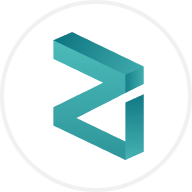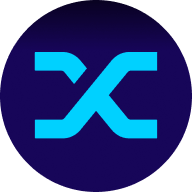
Zilliqa-Preis

Haftungsausschluss
OKX gibt keine Anlage- oder Vermögensempfehlungen. Du solltest gut abwägen, ob der Handel und das Halten von digitalen Assets angesichts deiner finanziellen Situation sinnvoll ist. Bei Fragen zu deiner individuellen Situation wende dich bitte an deinen Rechts-/Steuer- oder Anlagenexperten. Weitere Einzelheiten findest du in unseren Nutzungsbedingungen und der Risikowarnung. Durch die Nutzung der Website eines Drittanbieters („TPW“) akzeptieren Sie, dass jegliche Nutzung der TPW den Bedingungen der TPW unterliegt. Sofern nicht ausdrücklich schriftlich angegeben, steht OKX einschließlich seiner verbundenen Unternehmen („OKX“) in keinerlei Verbindung zum Eigentümer oder Betreiber der TPW. Sie stimmen zu, dass OKX nicht für Verluste, Schäden oder sonstige Folgen haftet, die sich aus Ihrer Nutzung der TPW ergeben. Bitte beachte, dass die Nutzung einer TPW zu einem Verlust oder einer Minderung deiner Assets führen kann. Das Produkt ist möglicherweise nicht in allen Ländern verfügbar.
Marktinformationen zu Zilliqa
Marktkapitalisierung = Umlaufmenge × letzter Preis

ZIL-Rechner


Preis von Zilliqa heute in USD
Beliebte Zilliqa-Konvertierungen
| 1 ZIL in USD | 0,013130 $ |
| 1 ZIL in EUR | 0,011565 € |
| 1 ZIL in PHP | 0,73816 ₱ |
| 1 ZIL in IDR | 221,08 Rp |
| 1 ZIL in GBP | 0,0098679 £ |
| 1 ZIL in CAD | 0,018190 $ |
| 1 ZIL in AED | 0,048227 AED |
| 1 ZIL in VND | 341,66 ₫ |
Über Zilliqa (ZIL)
- Offizielle Website
- Whitepaper
- Github
- Block Explorer
Häufig gestellte Fragen zum Zilliqa-Preis
Zilliqa ist ein leistungsstarkes Blockchain-Netzwerk, das auf Skalierbarkeit setzt und die Ausführung intelligenter Verträge ermöglicht. Es nutzt die innovative Sharding-Technik, um eine große Anzahl von Transaktionen gleichzeitig zu verarbeiten, was es zu einer hoch skalierbaren und effizienten Plattform macht.
Zilliqa hat eine Kapazität zur Abwicklung von bis zu 2.828 Transaktionen pro Sekunde (TPS) erreicht. Dieser hohe Durchsatz ermöglicht eine schnelle und effiziente Transaktionsverarbeitung und macht Zilliqa für Anwendungen geeignet, die leistungsstarke Blockchain-Lösungen erfordern.
Kaufen Sie ganz einfach ZIL-Token auf der OKX-Kryptowährungsplattform. Zum OKX-Spot-Handelsterminal gehören die verfügbaren HandelspaareZIL/USDTundZIL/USDC.
Sie können ZIL auch mit über 99 Fiat-Währungen kaufen, indem Sie „ auswählen.Express-KaufOption. Andere beliebte Krypto-Token, wie z. B.Bitcoin (BTC),Ethereum (ETH),Tether (USDT)undUSD Coin (USDC), sind auch verfügbar.
Darüber hinaus können Sie Ihre vorhandenen Kryptowährungen tauschen, einschließlichXRP (XRP),Cardano (ADA),Solana (SOL)undChainlink (LINK), für ZIL ohne Gebühren und ohne Preis-Slippage durch NutzungOKX Konvertieren.
Um die geschätzten Echtzeit-Konvertierungspreise zwischen Fiat-Währungen wie USD, EUR, GBP und anderen in ZIL anzuzeigen, besuchen SieKrypto-Konverter-Rechner von OKX. Die Krypto-Börse mit hoher Liquidität von OKX gewährleistet die besten Preise für Ihre Kryptokäufe.
ESG-Offenlegung
ZIL-Rechner


Haftungsausschluss
OKX gibt keine Anlage- oder Vermögensempfehlungen. Du solltest gut abwägen, ob der Handel und das Halten von digitalen Assets angesichts deiner finanziellen Situation sinnvoll ist. Bei Fragen zu deiner individuellen Situation wende dich bitte an deinen Rechts-/Steuer- oder Anlagenexperten. Weitere Einzelheiten findest du in unseren Nutzungsbedingungen und der Risikowarnung. Durch die Nutzung der Website eines Drittanbieters („TPW“) akzeptieren Sie, dass jegliche Nutzung der TPW den Bedingungen der TPW unterliegt. Sofern nicht ausdrücklich schriftlich angegeben, steht OKX einschließlich seiner verbundenen Unternehmen („OKX“) in keinerlei Verbindung zum Eigentümer oder Betreiber der TPW. Sie stimmen zu, dass OKX nicht für Verluste, Schäden oder sonstige Folgen haftet, die sich aus Ihrer Nutzung der TPW ergeben. Bitte beachte, dass die Nutzung einer TPW zu einem Verlust oder einer Minderung deiner Assets führen kann. Das Produkt ist möglicherweise nicht in allen Ländern verfügbar.













Soziales